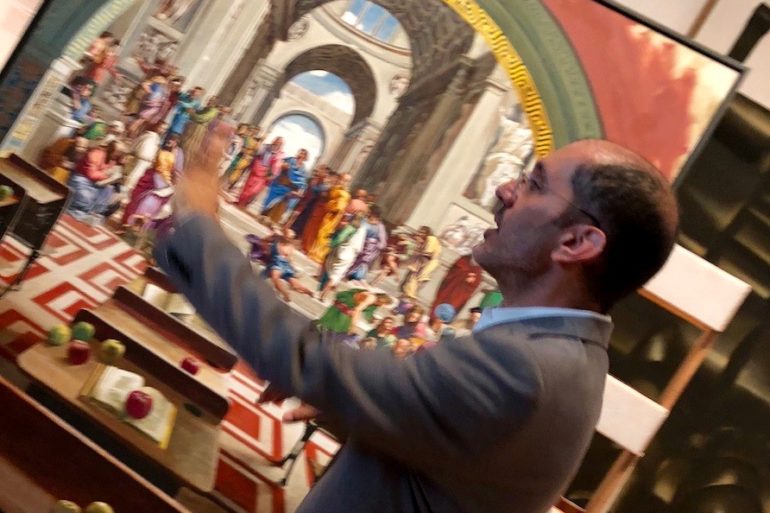
This post is also available in:

The Patricia and Phillip Frost Art Museum has begun its Monday Mixtape sessions for the 2018-2019 season: a monthly meeting in which works of art are selected and discussed with a dominant theme of interest, either architectural or social, discussed by specialized university teachers. Starting the symphony was Dr. David Rifkind.
Associate professor of architecture at the FIU and professional architect, Rifkind graduated from the History and Architectural Theory program at McGill University in Montreal before graduating from Boston Architectural College. He has written numerous books and important publications including an article on Italian colonial urbanism in Ethiopia that appeared in the Journal of the Society of Architectural Historians. The bet of life for Dr. Rifkind, however, remains the design of his house, Tin Box, tin house, in South Beach: designed with his wife, also a professor at FIU, the Tin Box is a highly sustainable home, with steel structure, mostly prefabricated and mostly recycled, solar energy, which produces drinking water and guarantees the perfect habitat for local wildlife. The house, whose progress is monitored and documented on the tinbox blog, is nothing more than the practical representation of the concepts taught in class by both teachers.
Starting from some works of the exhibition Connectivity: Selection from the collection of the Frost Art Museum, which celebrates the treasures of the collection in the 40 years of its foundation and includes objects rarely seen and stored in the vault, Rifkind has exposed to the public two works by George Deem that define how the notion of location serves as a creative catalyst for one of the artists who, starting from the emulation of the great painters of the past, has made it the object of his own form of art with wit and irony.
Son of Indiana peasants where he was born in 1932, George Deem, of Catholic origin, realizes that attending churches is an excellent way to learn about art. Supported by his cousin, a Benedictine monk who recognized his premature talents , he’s sent to study at the School of the Art Institute in Chicago, an excellent institution to this day. He graduated after coming back from military school in Germany, studying with Paul Wieghardt, former teacher of other important post-war American artists, such as Leon Golub, Robert Indiana and Claes Oldenburg. In Germany during his two years of service in the American army to which he takes part because drafted, he has the opportunity to live in Heidelberg and appreciate the baroque and rococo style, managing among other things to visit many of the main centers of art in Europe, including Florence, Venice, Paris and London.
Before moving permanently in the Flatiron District in New York, he goes back to Europe, more specifically Italy, with the intention of studying the great classics of the past and in particular the Renaissance period with its artistic improvements: the use of oil painting and of one point perspective . The greatness of Deem, who died of lung cancer in New York , in 2008 lies in having developed the concept of imitation of the classics,in a very particular and personal way. Previously seen exclusively as a form of study and homage, it became to Deem a fertile path on which he created his own form of art, as defined by art critic Steve Starger in Art New England: “It allows him to pull off what looks like a bold act of ego: Imagine having the nerve to think you ” redo ” “Da Vinci, Caravaggio, Thomas Cole, or Vermeer, thinking through, and then demonstrating, to have both the technique and the imagination to do it”.
His works start at the same time as he was working in one of the exhibition departments of the Metropolitan Museum of Art, starting to produce first “calligraphic images of cursive writings” as he defines them, which seem to be lines of an old illegible writing, before moving on to figurative art with those that he named “Compositions with illustrations”. Deem wanted his art to be immediately identified, so he began to reproduce already known images of famous artists. He painted works by Chardin, Goya, Raphael, Ruscha, Watteau and many, many more, with particular attention to Vermeer, for which he also wrote a book: “How to paint a Vermeer: the history of art of a painter “.
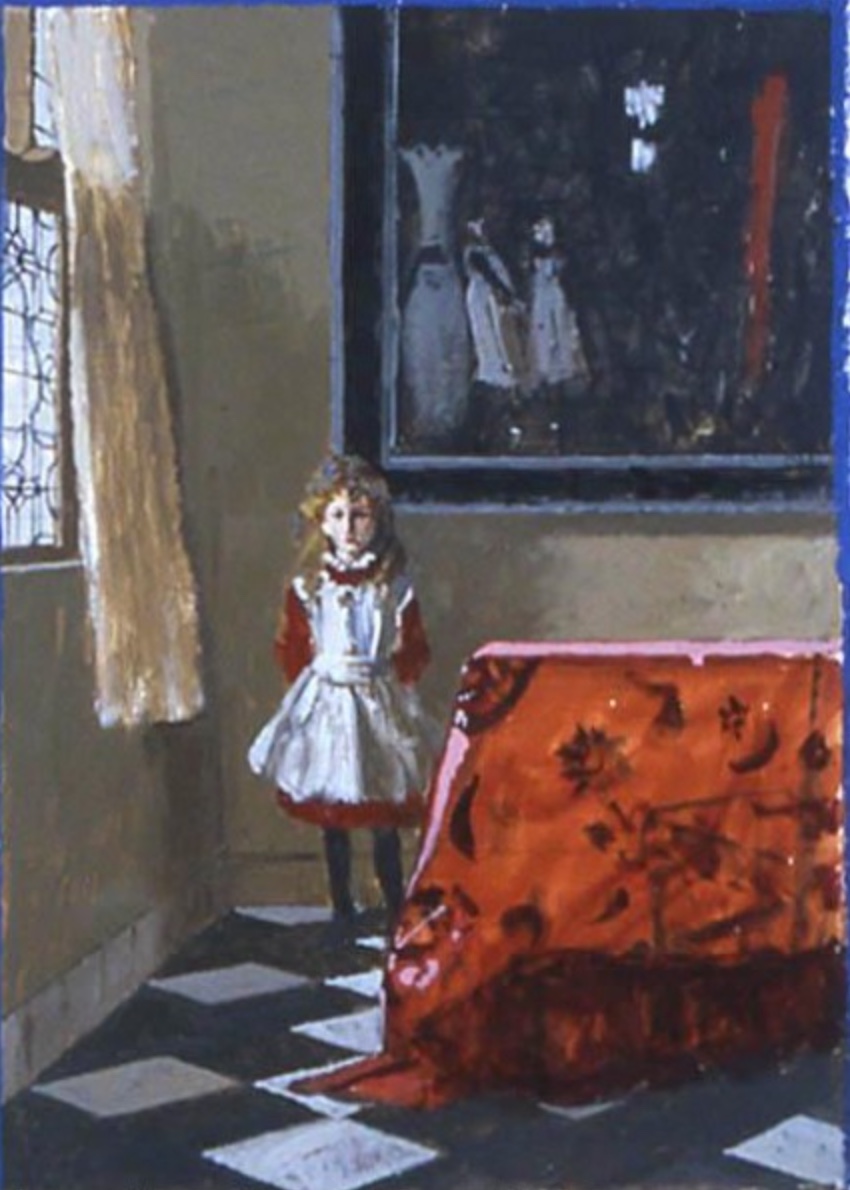
Deem reconstructed and reinterpreted the art of the past with intuition and originality to the point of being defined by various art movements. The art critic David Dearinger, defined him a pop artist, saying: “the soup boxes are to Warhol as the history of art is to Deem “, and later be configured as a realistic figurative, deconstructive, proto-postmodernist and post-modernist artist, but without ever falling into any of the topical or stylistic categories mentioned because his art form is kind of a quote, a paraphrase, a collage, a montage and an appropriation, or perhaps all things put together to the point of making a classic piece of the 1400s original again, only for temporal scanning no longer original by definition.
Deem is particularly fascinated by the art of Veermer and reproduces the works of which he will come to remove the characters as in The Art of Painting in 2002; to replace the characters with figures of other artists of other eras as he does with John Singer Sargent in Sargent Vermeer of 2007, or not to make them appear completely focusing on a single piece of the canvas such as the chair in Red Chair of 2002 up to become even irreverent in some of his works, in which he omits a piece of Vermeer, leaving a headless figure and calling his copy “Three-Quarter Vermeer”.
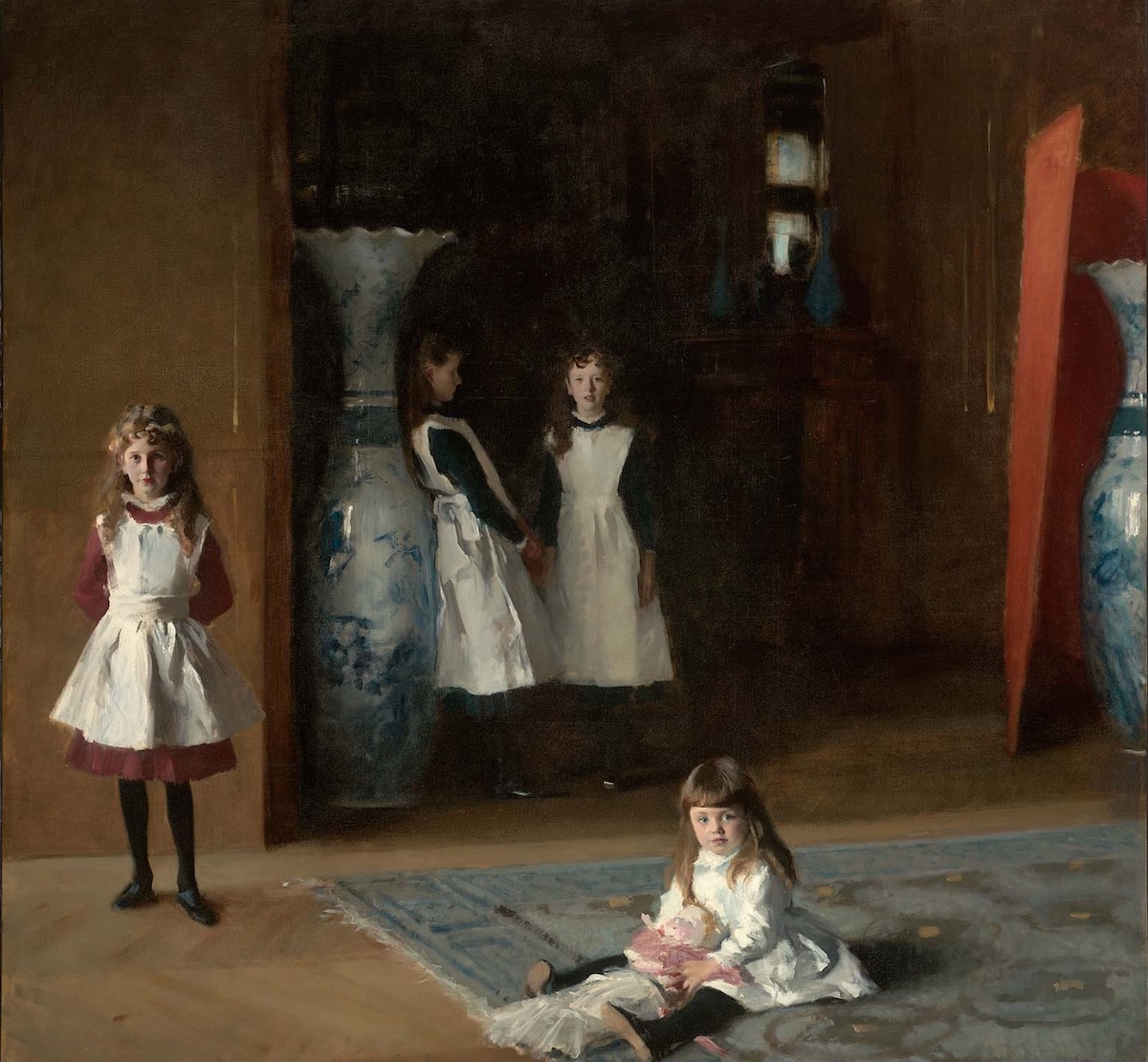
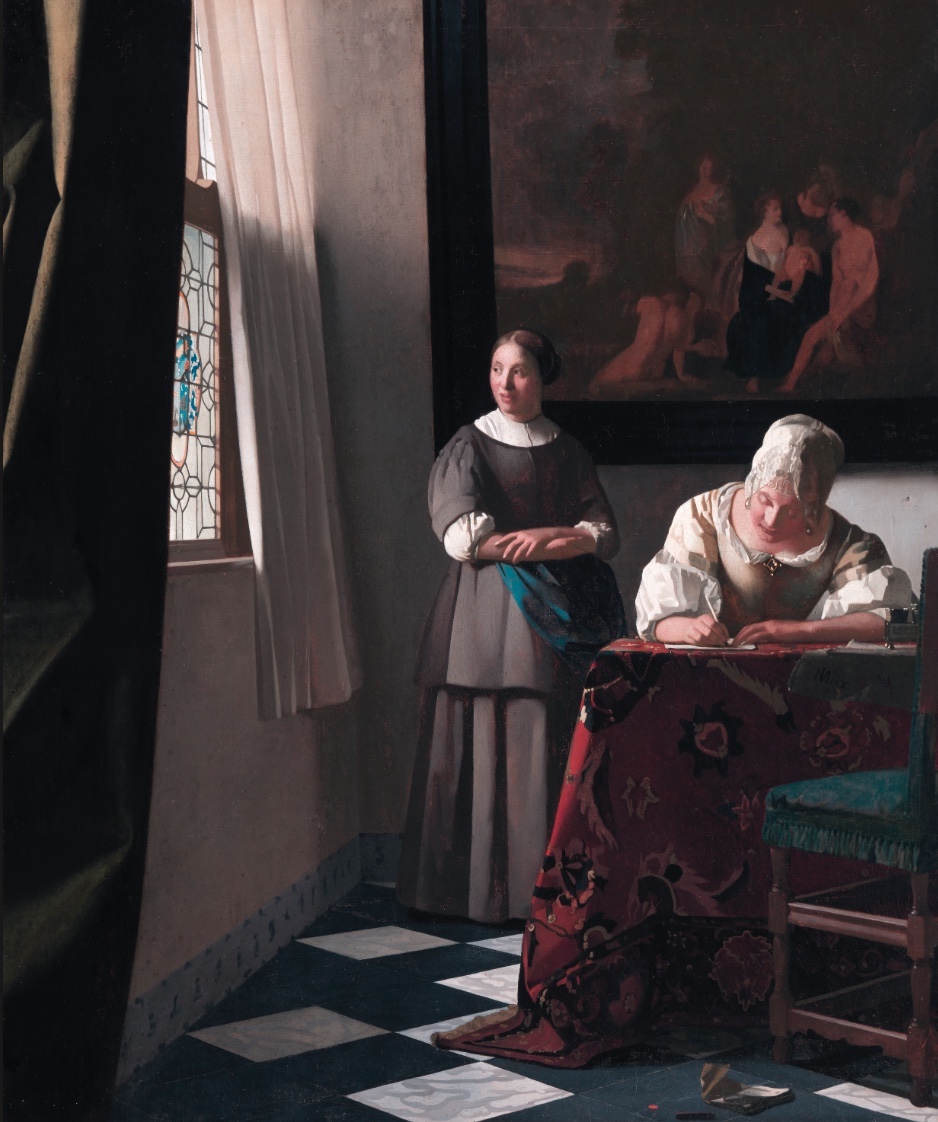
The works proposed by Rifkind, owned by the museum and exhibited only during the meeting tonight, because periodically rotated, belong to the series “The School of” and are The New School of Athens of 1979 and The School of Athens II of 1987 With the series “School of” Deem pays tribute to an important artist, in this case Raphael, but there are many others, and places it setting the scene in an American school as happens in the School of Athens in 1987 where The central image is faithfully reproduced while Raphael and other subjects have been removed to insert rows of desks, cast-iron blackboards and wood and scattered apples, in which the artist himself appears, who recounts in his writings “This is me, in my classroom … I can even tell you where I sat, it’s so close to the historical reality … It was in this school that poetry, magic, sex … “.
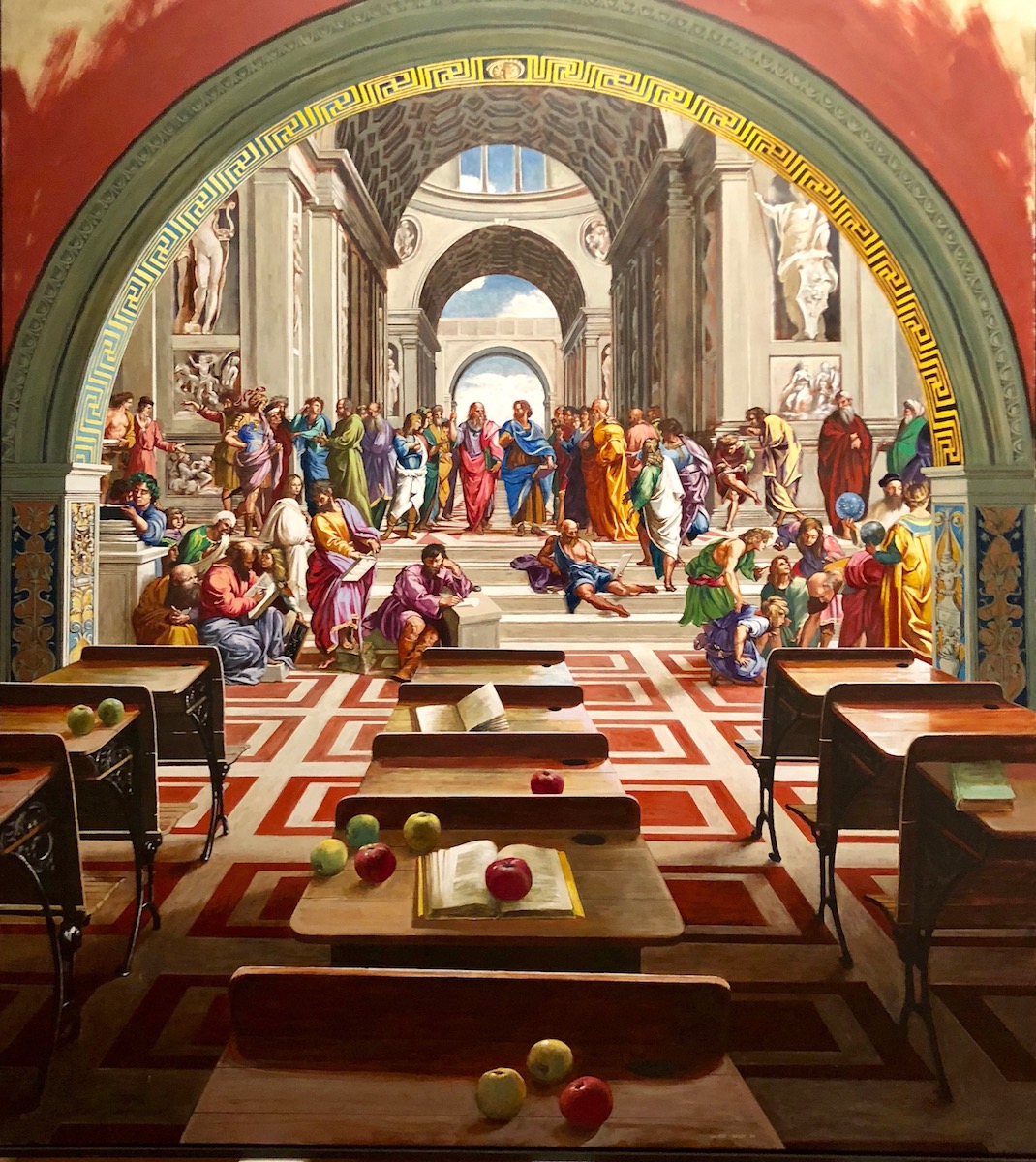
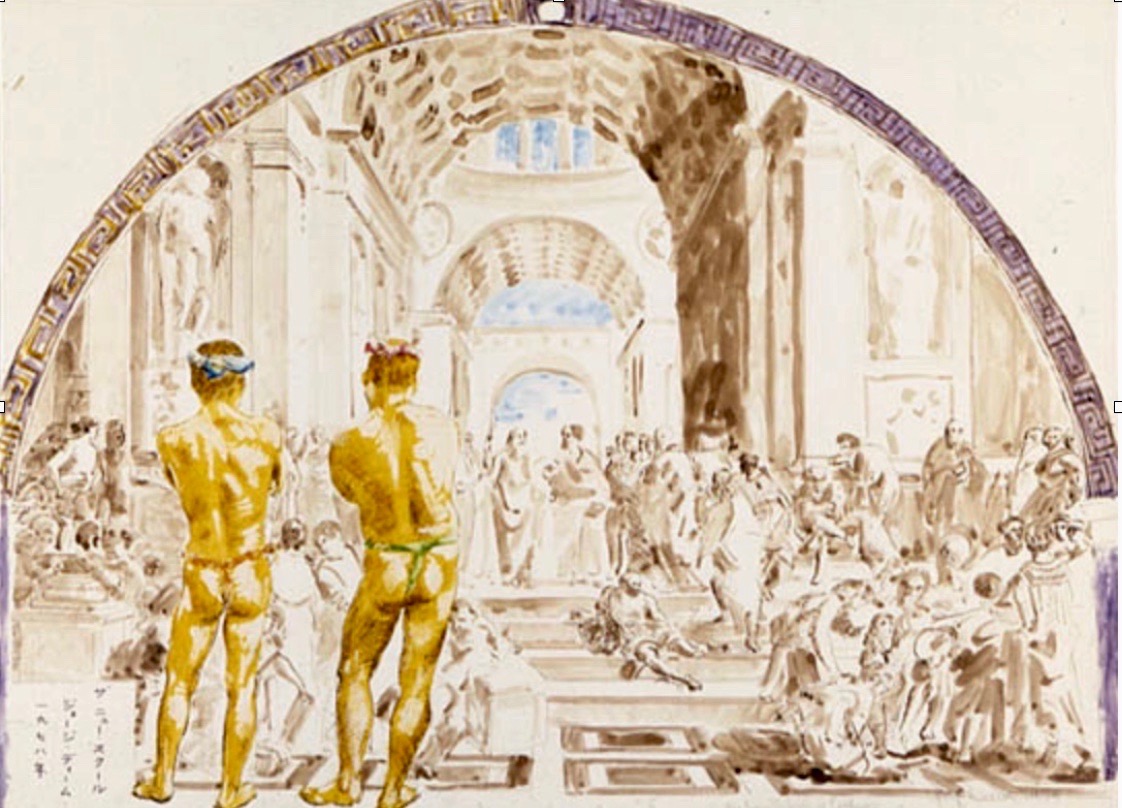
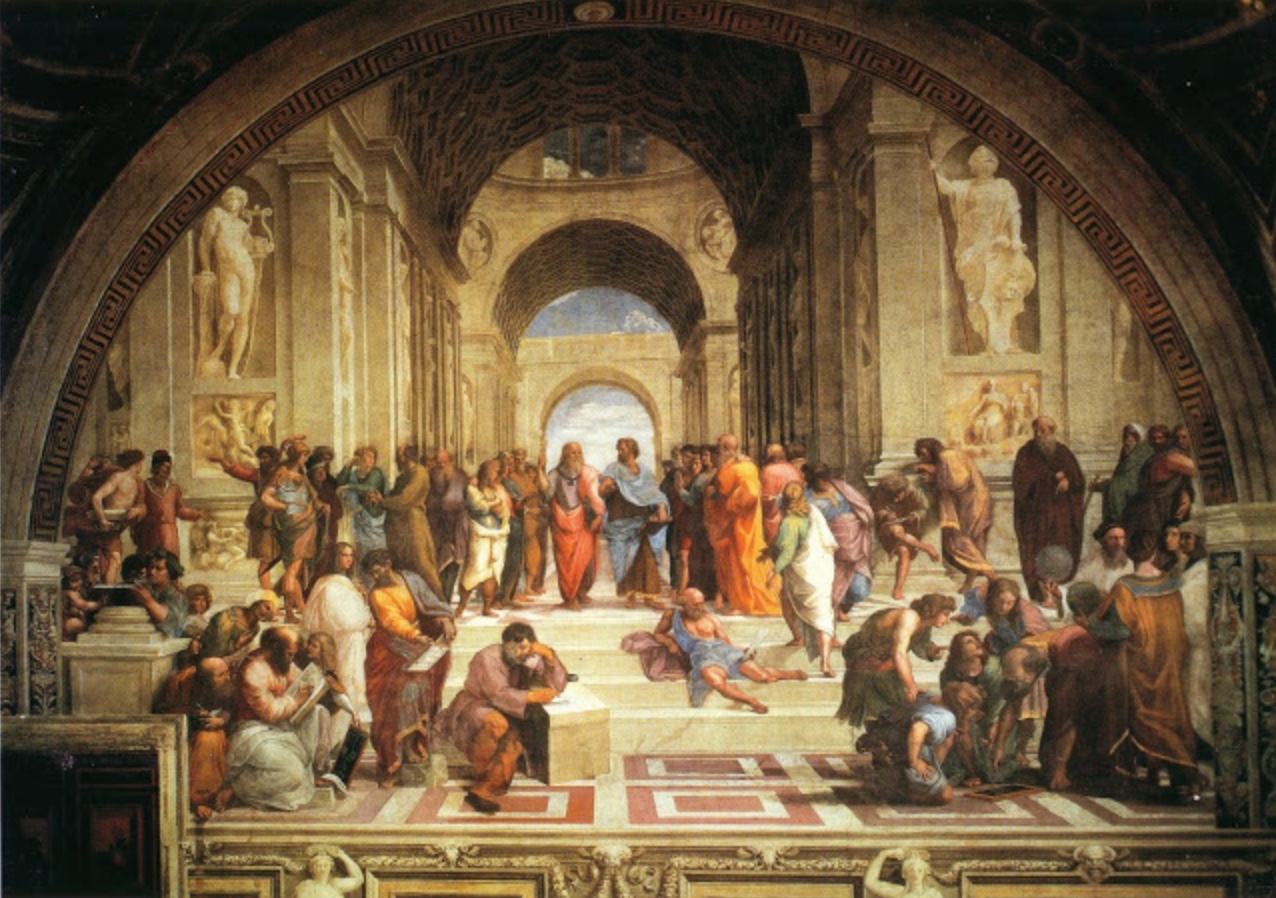
Antecedent is the New School of Athens, in 1979, where Deem represents the prince scene using nib and sepia ink with which he draws a contour not too thin so as to make it deliberately similar and not the same as the original and highlighting two wrestlers of sumo in yellow and blue, of shoulders that observe the scene. In the image, in which there is also the Japanese translation of the title, Deem uses a sharp irony in both directions: on one side we see a Raphael that is not there, and on the other an effect similar to Raphael that it is all there, in that work and emphasizes the satisfaction that is felt when you can grasp some fragment of knowledge, discovering a new way of seeing things. The genius of Deem is to deal with the two meanings of the word “school” and to use both meanings in paying homage to the admiring teachers. The use of trial patches, irregular or roughly executed edges are very frequent in Deem’s works and are the result of his concept of vision-revision from the history of art that evokes – not copies- and the extraordinary artistic skill it employs. His eye and his hand always mediate – and are mediated – between the complex moments of the historical memory of classical art and his personal art, adding a freshness by subtracting the elements and / or adding others. Deem in his works explores the underlying artistic structure: the perspective and consequently the concept of space modeling the images that beautifully connect the past and present, presenting a familiar context only apparently like a deja-vu with an unexpected shock effect.
.
